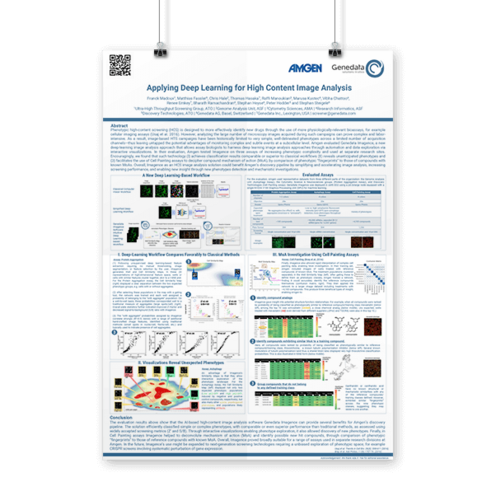Applying Deep Learning for High Content Image Analysis
Bio-IT World Virtual
October 6, 2020
Phenotypic high-content screening (HCS) is designed to more effectively identify new drugs through the use of more physiologically-relevant bioassays, for example cellular imaging assays (Usaj et al. 2016). However, analyzing the large number of microscopy images acquired during such campaigns can prove complex and laborintensive. As a result, image-based HTS campaigns have been historically limited to very simple, well-delineated phenotypes across a limited number of acquisition channels—thus leaving untapped the potential advantages of monitoring complex and subtle events at a subcellular level.
Amgen evaluated Genedata Imagence®, a new deep-learning image analysis approach that allows assay biologists to harness deep learning image analysis approaches through automation and data exploration via interactive visualizations. In their evaluation, Amgen tested Genedata Imagence on three assays of increasing phenotypic complexity and used at separate research sites. Encouragingly, we found that such technology (I) achieves classification results comparable or superior to classical workflows (II) reveals unanticipated phenotypes and (III) facilitates the use of Cell Painting assays to decipher compound mechanism of action (MoA), by comparison of phenotypic “fingerprints” to those of compounds with known MoAs.
Overall, Genedata Imagence as an HCS image analysis solution could benefit Amgen’s discovery pipeline by simplifying and accelerating image analysis, increasing screening performance, and enabling new insight through new phenotypes detection and mechanistic investigations.
